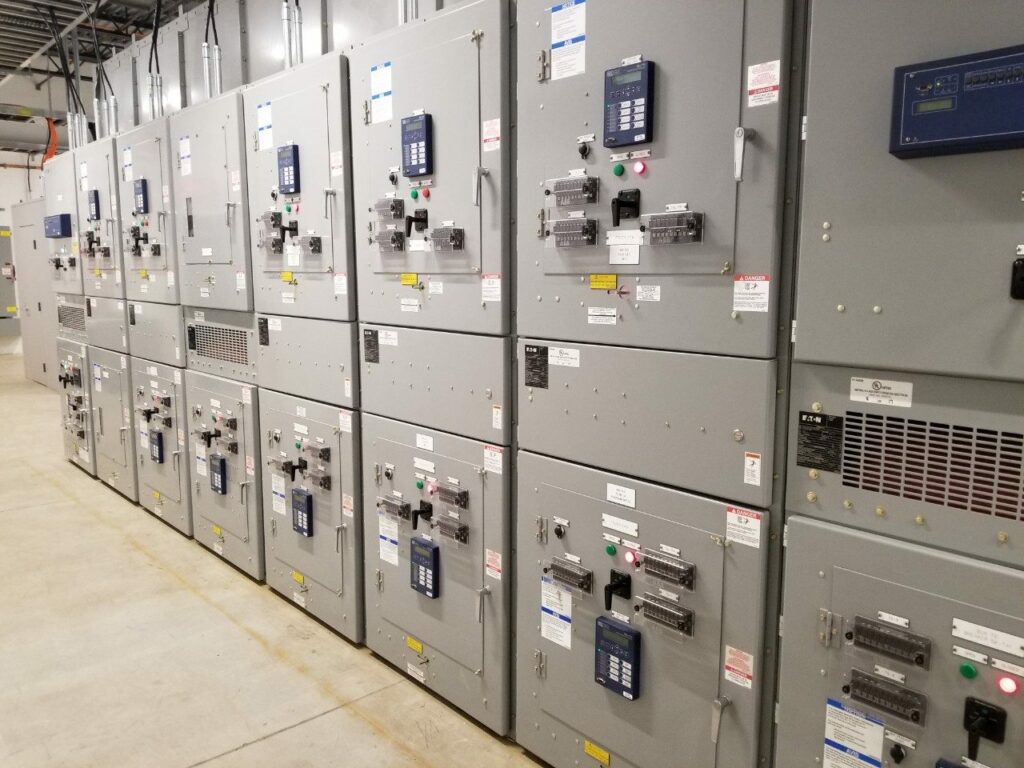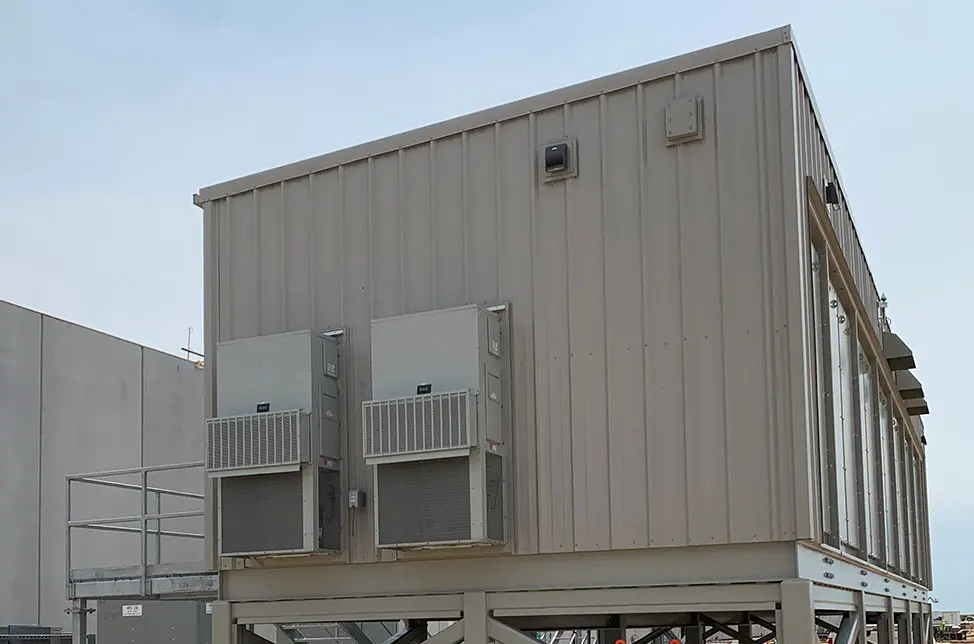Power Distribution Center
A power distribution center provides a secure enclosure for housing electrical equipment for power distribution, metering, and control. Some of the equipment within these enclosures include variable frequency drives, UPS systems, communication panels, and control switchboards.
In this article, we discuss the workings of power distribution centers, the design process, and installation.
Overview and Workings
Power distribution centers (PDCs) serve as transition points between the main power source and downstream equipment that use electricity. PDCs protect sensitive electrical equipment from the elements. Typically, the exterior is a pre-fabricated enclosure, with interior components custom engineered to the job.
Since PDCs are built to customer specifications, the equipment found in them varies. Generally, PDCs include switchgear, remote terminal units, control panels, AC/DC panels, a UPS system, HVAC, and batteries.
Switchgear
This is the first place electricity arrives in a PDC, so it serves as a gateway. Switchgear consists of power-conducting equipment such as fuses, breakers, and switches that conduct or interrupt electricity flow to other parts of the PDC. Thus, it provides isolation from fault currents and short circuits.

Also, switchgear has control systems that include relays and control panels that monitor and control the power-conducting equipment. Typically, power goes through a transformer from the switchgear where voltage steps down to levels suitable for the downstream equipment. Depending on the type of equipment, there could be switchgear of different voltage capacities to adapt to low and mid-voltage equipment downstream.
Remote Terminal Unit (RTU)
As smart devices become prominent in most industrial setups, RTUs have become a mainstay in PDCs. It serves as the interface where data is exchanged between remote devices and the control system within the PDC.
Control Panels
Control panels work closely with the RTU to deliver automated control of a power supply to equipment and other necessary control functions.
AC/DC Panels
Because of the variety of equipment receiving power from the PDC, it is common to use versatile AC/DC panels. Typically AC supplies larger equipment, while sensors and other low-power equipment use DC.
UPS System
To avoid an uncontrolled shutdown of equipment, PDCs always have batteries to ensure an uninterrupted power supply. In the event of power loss from the mains, the equipment can be safely turned off. The batteries are quarantined from the rest of the equipment to prevent the possibility of acidic erosion.
HVAC
Electricity generation is synonymous with heat generation, so PDCs are always fitted with HVAC systems and vents that ensure safe operating temperatures. The HVAC system should be appropriately sized to ensure equipment is properly cooled.

Power Distribution Center Design
Because PDCs are always customized to a client’s specifications, there is no fixed design method. However, one important feature of every design is the long-term durability of the structure. Once deployed, they remain in service for dozens of years, so the PDC must stand the harshest environmental loads – from hurricane protection to explosions, depending on building specifications and local code requirements.
As a result, all external components are usually made of galvanized or galvannealed steel, with panels welded or interlocked and gasketed. In addition, the painting system must be tested to ANSI C57.12.28. Insulation and HVAC should be sufficient to maintain a safe operating temperature for all components.
Depending on the design of the panels and available space, either top-entry or bottom-entry can serve to feed wiring into the housing. Another key aspect is the modularity of its construction. The interior heights, widths, and lengths should conform to applicable standards. Also, parts should be moveable and configurations expandable.
To ensure safety, electrical equipment installation must meet NEC spacing requirements to prevent unintentional energization. For instance, the code demands a minimum lateral clearance of 3 ft from every exposed live part. While headroom clearance is 6 ft or the equipment height, whichever is greater. Furthermore, alarm systems and caution signs should be properly located to alert operators, as well as integrated to control systems that take whatever necessary action. Overall, several industry standards guide the design of PDCs, including NEMA, ANSI, AISC, IEEC, NFPA, and IBC.
Installation of a Power Distribution Center
The installation of a power distribution center largely depends on the client’s needs and project specifications. Generally, they are cheaper to fabricate in a shop before hauling the building using a forklift, crane, or flatbed to the site for installation. Most electrical equipment comes pre-installed, wired, and tested.
Other activities, such as the installation of rails, platforms, and wiring to a power source as well as field devices, happen at their final destination. On arrival at the final destination, most PDCs will be mounted on skids or a wheel to provide a mobile design. However, in some locations, such as an offshore vessel that endures significant environmental loads, the building may be welded to an existing platform or frame.
